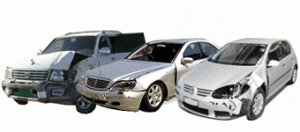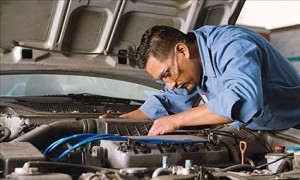The old saying that “one’s man’s trash is another man’s treasure” is definitely true when talking about cars from a junk yard. I personally have found several of my cars at junk yards, and some of the were real gems.
There are some things to consider before purchasing one of these vehicles, but if you follow our simple tips for buying a junk yard car you are certain to find a diamond in the rough and a worthy road companion.
What’s the Damage
 The most common reason for a vehicle to be taken to a salvage yard is that it was involved in a crash. When a car has been damaged in a crash it will receive a grade that basically tells you the severity of the damage. It is very important to pay close attention to the car’s grade so that you don’t take on something that is going to turn into a giant headache in the future. The damage rating is as follows: A is terrible, B is bad and categories C and D are designated as workable. It is not too common to see C and D rated cars in a salvage lot, but you may get lucky if you keep your eyes open. We also advise staying away from bent frames even if they are C or D graded. Trust us when we say that it is not worth the trouble you are bound to encounter not to mention the decrease in safety.
The most common reason for a vehicle to be taken to a salvage yard is that it was involved in a crash. When a car has been damaged in a crash it will receive a grade that basically tells you the severity of the damage. It is very important to pay close attention to the car’s grade so that you don’t take on something that is going to turn into a giant headache in the future. The damage rating is as follows: A is terrible, B is bad and categories C and D are designated as workable. It is not too common to see C and D rated cars in a salvage lot, but you may get lucky if you keep your eyes open. We also advise staying away from bent frames even if they are C or D graded. Trust us when we say that it is not worth the trouble you are bound to encounter not to mention the decrease in safety.
There are also some areas where it is common to see some cars that are junked due to fire or flood damage. Flood and fire salvages can be a bit tricky because some things that seem to be functioning properly can and do fail a lot of the time. These cars are difficult because it’s nearly impossible to know what they need to have done and may cease to function even if they seem to be in fairly good condition. We suggest being very cautious when selecting a junk car that has fire or flood damage.
Purchase Details
There are a few things that you are going to want to take into consideration when buying a car from the junk yard. These are not reasons not to take this route, but they may affect the way you purchase, insure, register and/or sell your vehicle. Financing a junk car won’t be an option, so knowing these things beforehand will allow you to have all the necessary funds without any surprises.
For starters it can be a bit difficult to ensure a salvage car and the requirements will vary by state. You can however expect to obtain at least liability insurance to protect yourself in case of an accident where you are at fault. Keep in mind that if you are able to find comprehensive coverage do not expect the insurance company to pay 80% of the car’s listed value if you are in a crash. They are not too keen on paying up if it’s already been through the wringer. Registering your vehicle will also be approached differently with a car from the junk yard. In many states you will be required to have a formal inspection be performed by a police officer or a repair shop before you are able to register the car. Once that is complete you will be able to receive a salvage title, but this cannot be changed ever so keep that in mind if you want to sell one day. Once a salvage always a salvage, no matter how much work and money you’ve put into it.
Go With the Most Practical Option
 When deciding which vehicle to purchase from the junk yard the most important things you will want to consider are going to be how much money the car is worth as is, how much work you are going to have to put into it and how much money all of that work is going to cost. Try to approach a salvage car like you would any project and make a decision accordingly. This is another way to save you from making a purchase that you may regret and hopefully be less of a headache.
When deciding which vehicle to purchase from the junk yard the most important things you will want to consider are going to be how much money the car is worth as is, how much work you are going to have to put into it and how much money all of that work is going to cost. Try to approach a salvage car like you would any project and make a decision accordingly. This is another way to save you from making a purchase that you may regret and hopefully be less of a headache.
It doesn’t make much sense to purchase a salvage that is going to need tens of thousands of dollars’ worth of work when it is only valued at a few thousand. A car like this has likely been through a serious crash and is even more likely to have some major problems later. We suggest finding a salvage that is valued at a few thousand dollars that way you can put a reasonable amount of money into it without risking coming out at a loss. The vehicles that are valued at less tend to be more reliable anyway, so save yourself the time and money by taking the cheaper route.
Finalizing the Price
Once you have selected the junk yard car that you want to purchase, you will want to finalize the price. We suggest asking as many questions as possible about the vehicle as possible and making a detailed list of all the issues that will need to be addressed to get it running again. You may want to have a pre-purchase inspection performed to ensure that you have a full scope of the issues as well. After you have gathered this information, start calculating how much the work and parts are going to cost you as well as registration and insurance.
We also suggest getting a copy of the Kelly Blue Book and checking the value of the vehicle yourself too. Compare the KBB price to the price requested by the junk yard to see if it seems reasonable when you include the amount of extra time and money that is going to be required. As long as you feel that the asking price is correct and that you won’t be coming out of it at a loss, you can finalize the price and purchase the salvage.
Repair Time

The first big steps are completed and now you can begin the process of getting your junk yard pick on the road again. You will first want to decide what work you are able to do yourself and what work you will have to outsource to more skilled individuals. The great thing about doing all of the work yourself is that you are able to decide what your timetable is and how fast you make progress rather than being at the mercy of someone else’s schedule. It is also usually a bit cheaper too, so if you are qualified this is obviously the best path for you.
If you are having another mechanic perform all of the work for you, try to pin down a completion date as soon as possible to ensure that it isn’t going to drag on for too long. It is also super important to have the price for the work set beforehand as well. There may be unexpected things that will pop up along the way, but having at least an idea of how much you are going to be shelling out will sure make it easier and will lessen the confusion once the work is complete.

